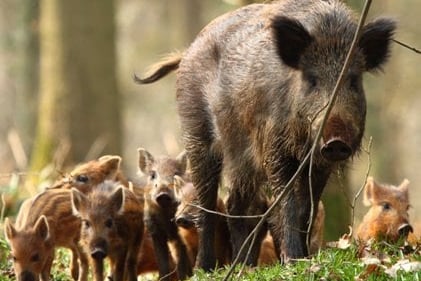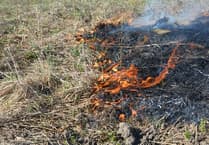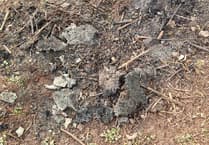FORESTRY England has issued advice to walkers in the Forest on how to enjoy the sight of wild boar and stay safe around the animals.
“Wild boar are stocky, powerful animals covered in bristly hair that vary from dark brown almost black in colour to gingery brown.
Mature males have tusks that protrude from the mouth. Females also have tusks, but these do not protrude. Piglets are a lighter ginger-brown, with stripes on their coat.”
They added: “Wild boar grow to be very large, strong animals and can move surprisingly fast for their size.
They will also readily move to defend their young when they feel threatened, so should always be treated with caution and respect.
Wild boar have relatively poor eyesight but a keen sense of smell. They are more likely to sense or hear the movement of people or dogs moving towards them rather than seeing them.
They will react by moving towards the noise to see who or what is approaching. This can be interpreted as aggressive behaviour.
When a family group (a sounder) is disturbed by walkers, the tendency is for one of the larger sows to move and position themselves between the walkers and the young piglets.
The other sows in the group will then lead the piglets to safety in deeper vegetation. Once the family have moved off, the defending sow will usually suddenly turn and rejoin the group out of sight.
The defending sow may, however, be provoked into a mock charge if they feel threatened.
This may happen if walkers have continued towards the sow and they have not noticed the animal.
Male boar tend to be seen alone and are less likely to run or move away from people, often simply standing and watching as you pass by.”
Anyone planning to camp in the area during the Easter break or to take photographs should practise caution.





Comments
This article has no comments yet. Be the first to leave a comment.